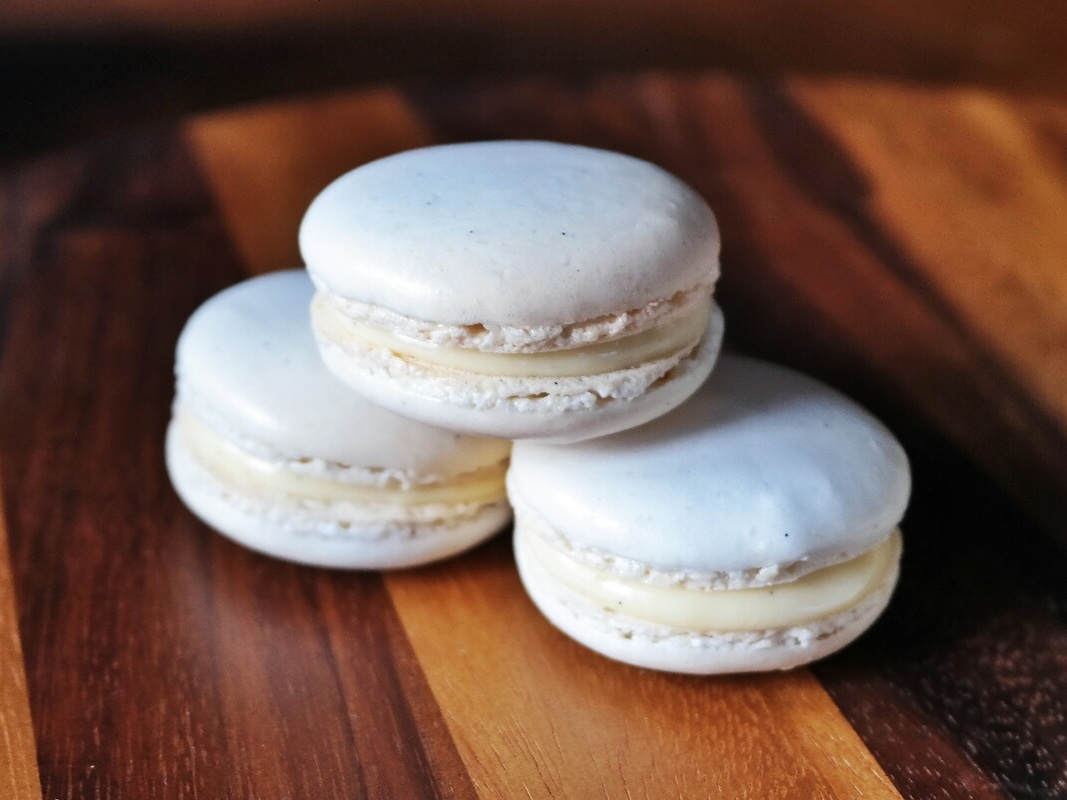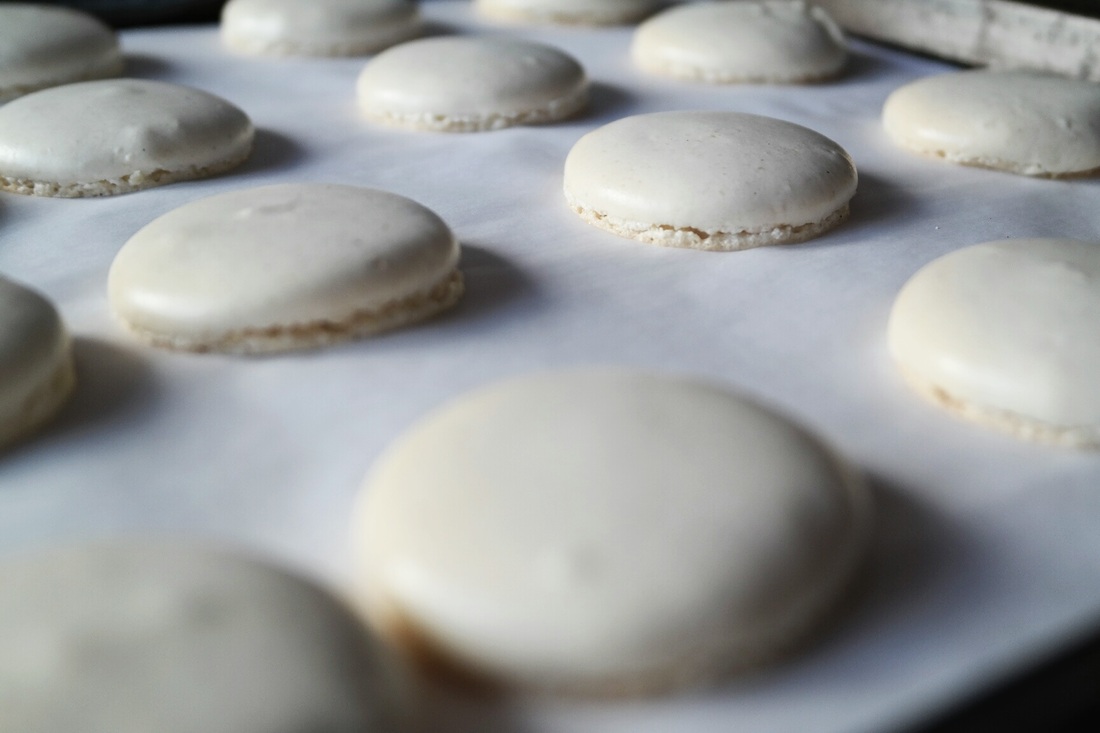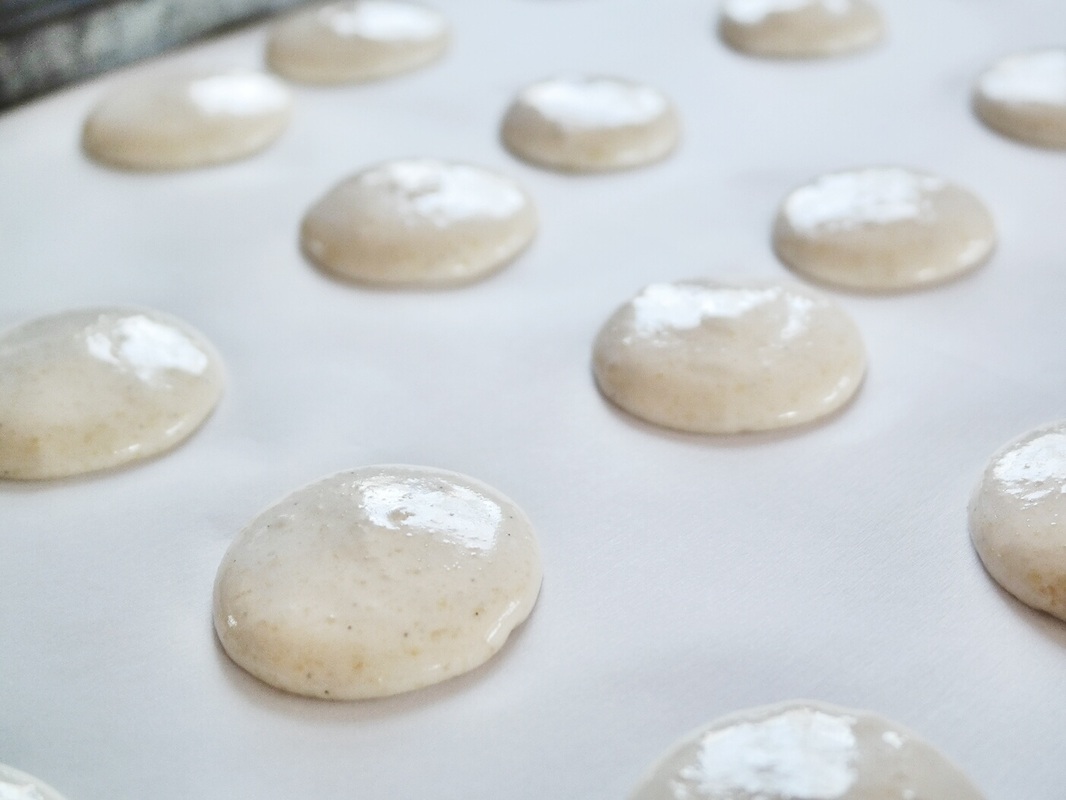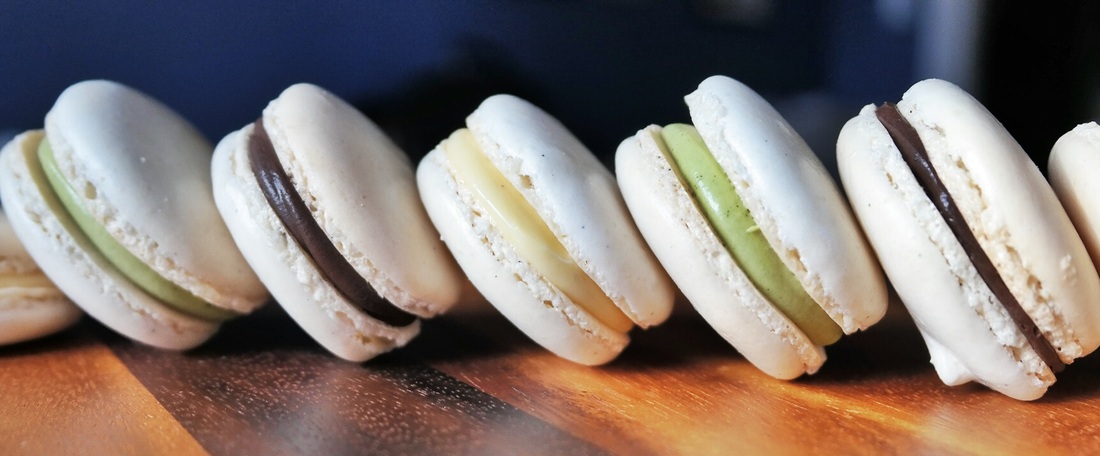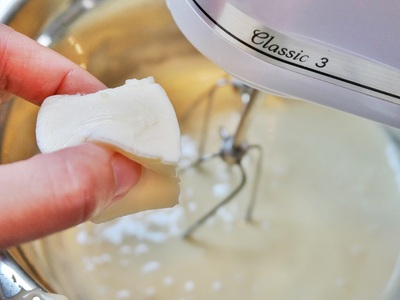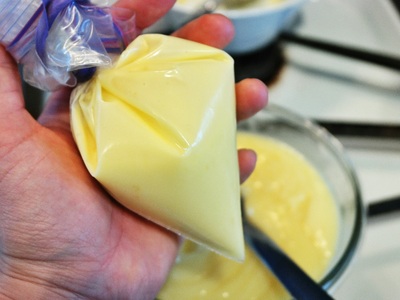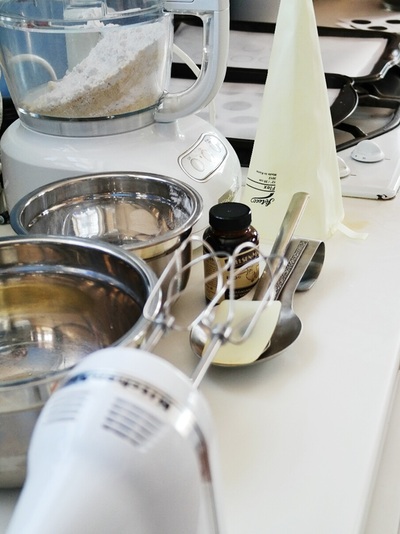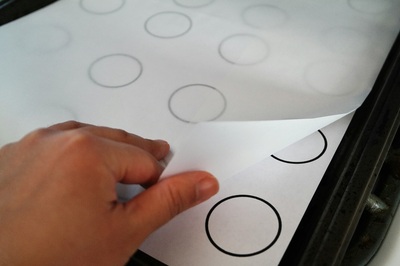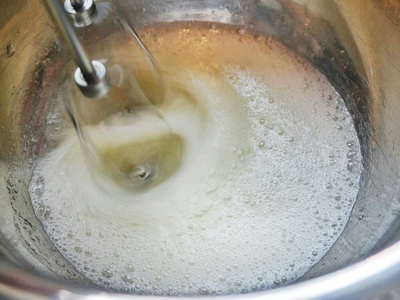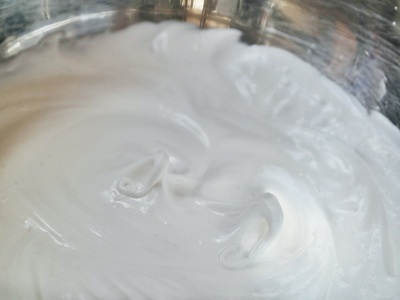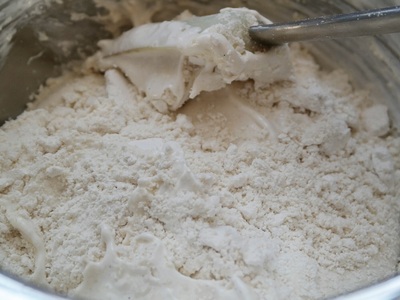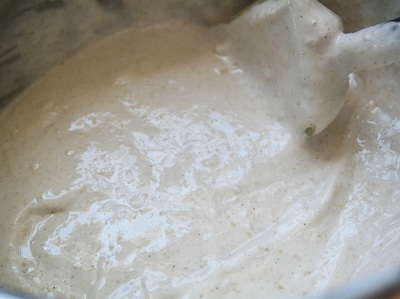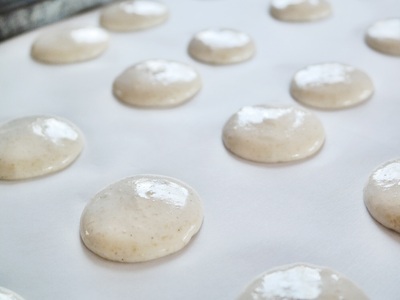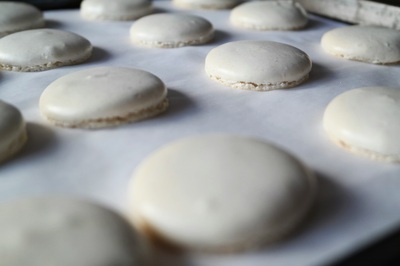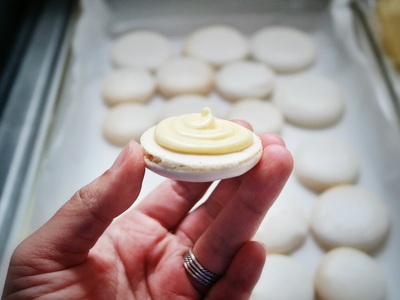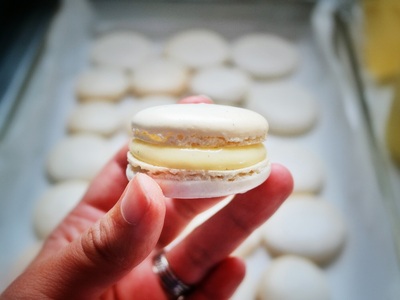Spring is here, and Easter is just around the corner!
Instead of the traditional bunny-shaped coconut cake for Easter brunch, I decided to create sunshine-colored sweet treats in the form of vanilla lemon macarons. These little French sandwich cookies are perfectly crisp from the meringue cookie and creamy soft from the French buttercream filling - all in one bite! With the lemon buttercream filling, it's like a little burst of spring for the senses.
Instead of the traditional bunny-shaped coconut cake for Easter brunch, I decided to create sunshine-colored sweet treats in the form of vanilla lemon macarons. These little French sandwich cookies are perfectly crisp from the meringue cookie and creamy soft from the French buttercream filling - all in one bite! With the lemon buttercream filling, it's like a little burst of spring for the senses.
The recipe I designed makes the macarons quite easy to bake and assemble. These cookies store well in the freezer for a few weeks, so they can be made way ahead of time for parties. You can make everything in one day, but I actually spread out the process over a couple days to make it more leisurely - make the lemon buttercream one day, then bake meringue cookies and assemble the cookies the next day.
While the mixing of the macaron batter only require a few steps, I really recommend to put precision into each step. Make sure to read the recipe thoroughly before making, and here are a some important things to note:
- Since the cookies need to be sandwiched together, it's important to have each cookie the same size. I found this really cool site where you can print out cookie circle templates: http://www.getcreativejuice.com/wp-content/uploads/2013/09/circle-1.5-inch-macaron-template.jpg. Use the printed templates under your parchment paper as a guide to how much batter to pipe out for each cookie.
- Before you start the meringue cookie recipe, make sure you have all your ingredients pre-measured, parchment sheets and circle templates on the baking sheets, pastry bag assembled, and everything else ready to go. Time is of the essence with this recipe, and if you take too too long with the batter, the meringue will deflate, making your cookie batter runny (aka unusable).
- In the baking world, measurements are usually done in weight, not volume, in order to get super precise measurements. Sometimes you can get away with measuring out a cup of flour, instead of 8 ounces - THIS IS NOT ONE OF THOSE TIMES. Macarons really ride the fine line between culinary and chemistry...So to get the best results, use my weight measurements when they're there - don't substitute them for volume.
- You want the almond flour to be as finely ground as possible to reduce unsightly clumps and grittiness in your cookie batter. Make sure to use a food processor to blend the flour and powdered sugar together really well.
- Make sure your egg whites are yolk-free - not even the tiniest drop of yolk. Fat from the yolk deflates meringue.
- You'll need a pastry piping bag with round tips to make the cookies and pipe the buttercream filling. If you don't have a pastry bag, you can use a ziploc bag with a very small part of the a corner cut off. It's not ideal - this won't make as pretty of circles for the cookies, but it works.
By the way, you don't have to stick with my lemon buttercream filling if you want to get creative with other macaron flavors. Feel free to use other ingredients to mix into the buttercream, and add a splash of food coloring to the buttercream for a pop of color. Here are some other filling ideas to get your started:
- Green tea matcha powder
- Cocoa powder
- Peppermint oil
Lemon Vanilla Macaron Cookies
(Yield: ~24 sandwich cookies)
|
French Lemon Buttercream Filling
|
Meringue Cookies
|
Culinary Dance Steps:
MAKING THE LEMON FRENCH BUTTERCREAM
MAKING THE LEMON FRENCH BUTTERCREAM
- In a small saucepan, stir together sugar and water. Bring the sugar water to a boil and cook until the syrup reach a temperature of 240°F on a candy thermometer.
- While the syrup is boiling, whisk the egg yolks in a medium mixing bowl until they are light yellow in color.
- As soon as the syrup reaches 240°F, very slowly pour the syrup into the egg yolks while constantly whipping. Make sure to pour the syrup very slowly so that the yolks don't start curdling/cooking.
- Continue to beat the egg mixture until it has completely cooled to room temp. and the yolks are thick in consistency.
- Whip in the butter a little at a time, just as fast as it can be absorbed into the mixture. (At this point, you have created a buttercream frosting base. If you want to try making other buttercream flavors, in addition to the lemon, you can separate some of the buttercream from the big batch.)
- Whip in the lemon juice, lemon zest, and yellow food coloring (if you're using it).
- Place the finished lemon buttercream in the fridge for a few hours to let it harden. While the buttercream is chilling, you can make the meringue cookies. (If the buttercream is still too soft after a few hours in the fridge, you beat in more room temp. butter.)
MAKING THE MERINGUE COOKIES
- Print out the cookie circle templates (enough for 24 circles) and place them on your baking sheets. Place parchment paper over the circle templates. Prepare a pastry piping bag with a medium circle tip.
- Preheat the oven to 325°F if using the convection setting (recommended). For standard ovens, preheat to 350°F.
- Using a food processor, pulse together the powdered sugar and almond flour until as fine as possible. Set aside.
- In a large bowl, add the egg whites, cream of tartar, and a large pinch of the granulated sugar. Using an electric hand mixer on med-high speed, whisk the egg whites until sudsy-looking. Then slowly add the remaining granulated sugar while continuing to whisk.
- Continue to whisk the egg whites until stiff peaks form. That is, if you turn off the mixer and pull the beaters straight out of the egg whites, peaks will form that keep their shape. Whisk in vanilla extract.
- Gently fold the almond flour mixture into the egg whites in three small batches. Be careful when folding in the flour, as to not make the egg whites deflate. You can tell if the egg whites are deflated if the batter gets very runny and is no longer fluffy. If this happens, the batter is no longer usable.
- Add the meringue batter into the pastry piping bag. Pipe the batter onto the parchment-lined baking sheets using the circle template as a guide. Time is of the essence here, so don't take too long to pipe the batter, or else it will deflate. If you have any curly-Q tops after piping, you can dip you finger in water and gently smooth out the bump.
- Tap the unbaked trays firmly a couple times into the table to get air bubbles out of the batter. Bake the cookies for 10 minutes if using the convection setting. Standard ovens should bake the cookies for 12 minutes. Finished cookies will look slightly raised and have a shiny top with no browning.
- Let the cookies cool completely before gently removing them from the parchment paper. At this point, the cookies can be frozen for future assembly. To freeze, layer the cookies with clean parchment paper in an airtight container.
ASSEMBLING THE MACARONS
- Spoon the lemon buttercream into a pastry bag with a small round tip.
- Pipe the buttercream onto the flat side one meringue cookie. Then sandwich another meringue cookie onto the piped buttercream.
- Placed the finished sandwiched cookies in an airtight container, placing parchment paper between cookie layers.
- Freeze the cookies for at least 3 hours to set. You can keep the cookies frozen for future parties - just let them thaw out in the fridge for an hour before serving. Because French buttercream has a lower melting point, don't keep them out in room temperature too long - this should be too much of a problem though because I bet people will eat them all up in minutes. ;)
